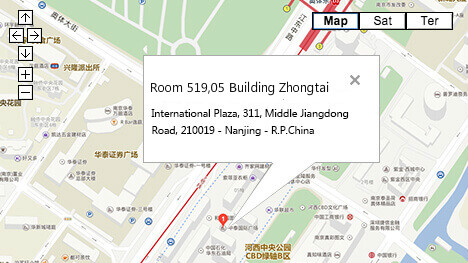Pins recall alert published by the United States Consumer Product Safety Commission ( CPSC) and…
Four simple steps for starting to do quality control
BY RENAUD ANJORAN
Some importers have been buying from China for many years, and yet they have never done quality control in a professional manner. The science behind inspection protocols seems complex–nearly intimidating. Buyers don’t know where to start, and they don’t know how their suppliers will react.
On the other hand, quality control is a necessity for most shipments. The constant search for cheaper suppliers, the bad habit of subcontracting to lower-grade factories, and the high risk of communication mistakes, all make a strong case for systematic inspections.
So, how to start? What are the first steps? After helping a few importers to start doing quality control, here are the first four steps I recommend.
1. Establish clear expectations
Some buyers choose a sample, negotiate a price, and then wait for delivery. This might work for off-the-shelf (standard) items with low quality/safety constraints, but not for most made-to-order products. And, think about it: on what basis will an inspector approve–or reject–a production?
You should try to get perfect/golden samples (i.e. representative of what you expect to get out of bulk production), but this is usually not enough. You also have to prepare–or confirm, if your supplier accepts to do it–a list of specifications. And these specs will become the checkpoints for the inspector. See this useful infographic: How to prepare a quality inspection checklist.
2. Don’t focus on final inspections
Final random inspections are a good tool for approving all aspects of production (total quantity, product specs, aesthetics, packaging…). But they tend to put a lot pressure on the supplier: what happens if serious non-conformities are found at that time? It is too late. The risks for a factory that gets caught are pretty high: re-work of the goods, re-production, penalties, air freight, or even order cancellation…
Instead of sending inspectors at the end (i.e. using them as policemen), try to send them when the goods are in process. Issues can get caught and corrected early: this is not only an extra safety for the buyer, but also a helping hand for the factory. This is how you should frame the discussion when you tell your suppliers about your QC intentions.
Early inspections (during production) have several positive side effects. They are a way to ensure that production is taking place in the right factory. Samples can be picked up randomly for lab testing. And it can prevent long shipment delays if the factory corrects course immediately after quality issues are noticed.
Don’t get me wrong, Chinese suppliers will not welcome this idea warmly. Many of them see QC inspectors as a nuisance. I have seen long-time suppliers of an importer (more than five years) getting used to inspections… But they would never admit that it is a necessity. Which leads me to the third step.
3. Inspections are not an option
You should be careful about the signals you send to your suppliers. Small things can go a long way:
- You should write “Quality inspection required prior to shipment” on your P/Os.
- If you pay by letter of credit, you can require a passed inspection report from your nominated QC provider.
- When you develop new products, ask extra samples for the inspector’s use.
- Keep track of the final inspection date and the shipment date, not just the shipment date.
All this is quite standard, and thousands of importers follow these tips.
You still have the freedom not to book an inspection for a given shipment, or to do skip-lot inspections for the most reliable suppliers. But you are the one to take this decision, not your suppliers. They should see inspectors as an extension of your organization. On the other hand, you should make sure you work with professionals who will be respected by factories.
4. Find the right balance between helping and arm-twisting
A buyer can play it “tough”, be “easy” on his suppliers, or find the right balance in between.
The “tough” way: a focus on final inspections performed rigidly.
Suppliers have no choice: either they comply with the rules, or they are charged penalties and/or re-inspection fees. Charge-backs are triggered by late changes in planning or non-respect of quantity requirements, for example. The fees are charged by the inspection firm to the importer, who re-invoices everything to the supplier.
It works well for large buyers who are adequately organized and who have the power to charge penalties systematically. But small-and-medium-sized importers can seldom play this game.
The “easy” way: in-line inspections and/or tailored final inspections.
As noted above, inspections during production don’t create much adversarial tension, and there is less timing pressure.
Once production quality has been secured, final inspections can be a little less formal. Why? Because it is less risky to loosen requirements about the proportion of presented products.
This “easy” way is only possible if you have at least *some* trust in your suppliers. It is technically possible–but rather difficult–for them to cheat.
Any other tips, anyone?
Filed Under: Quality Control Tips
Article Source: https://qualityinspection.org/four-simple-steps-for-starting-to-do-quality-control/


This Post Has 0 Comments